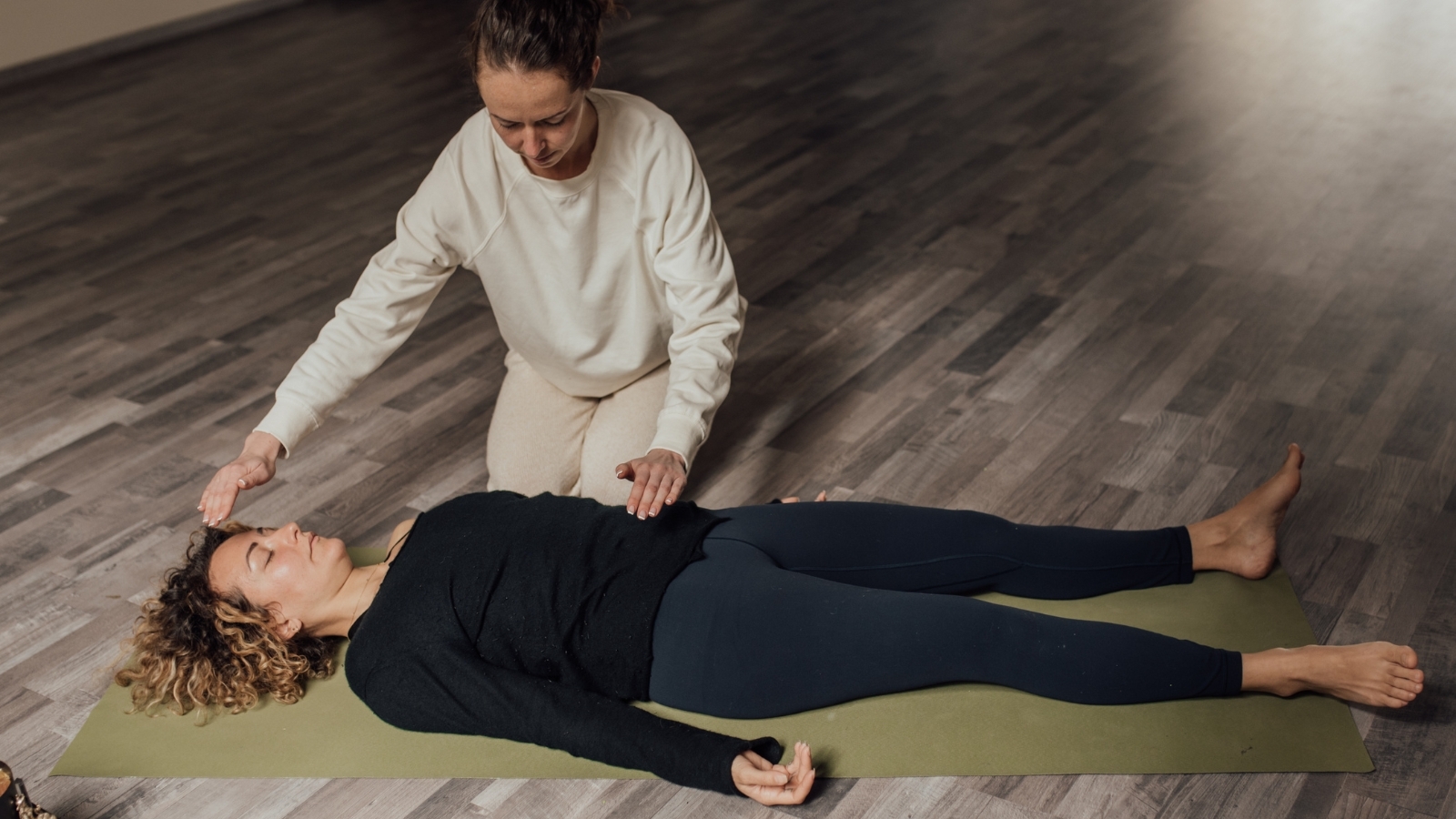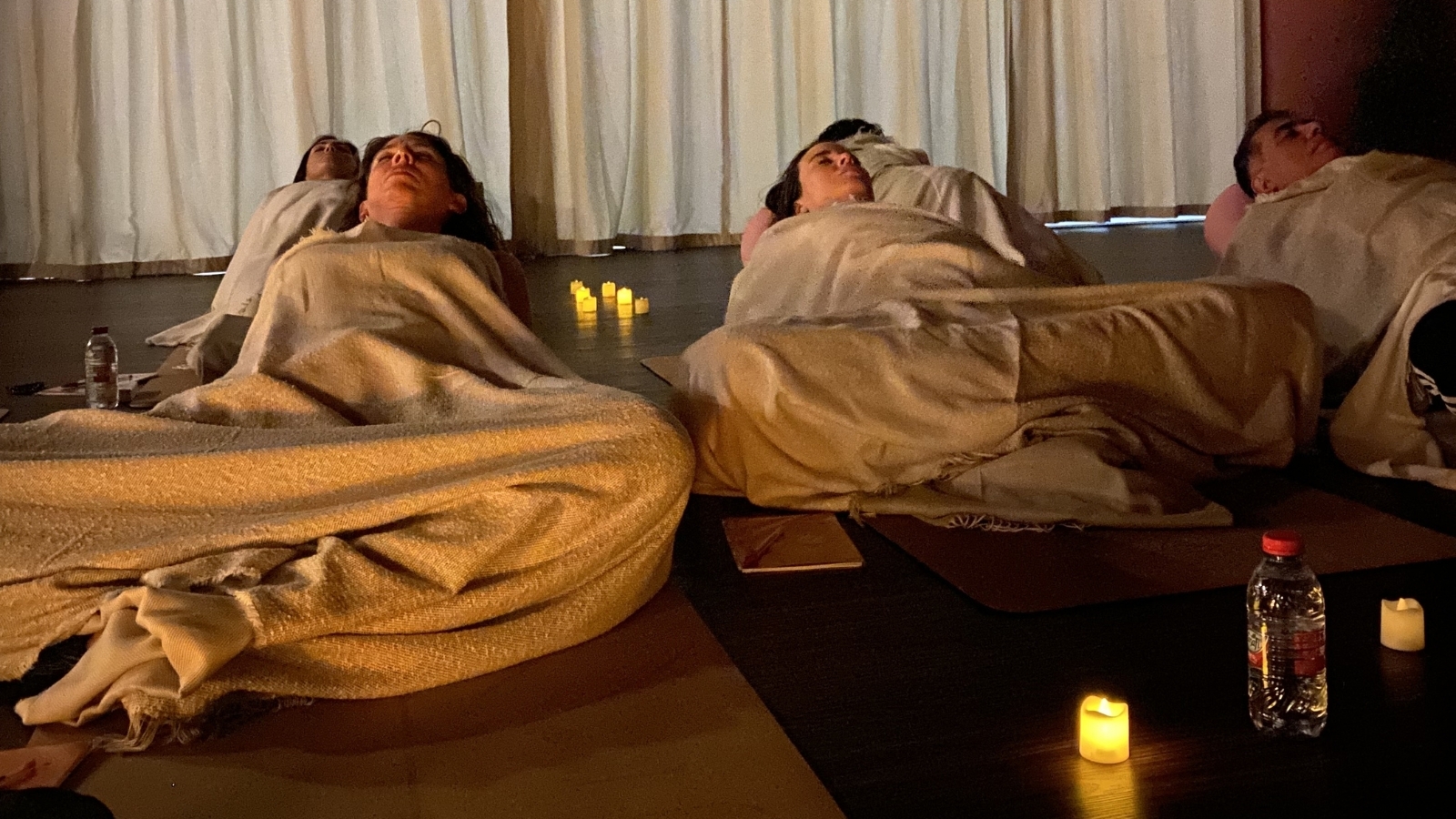Intention: To uncover the transformative potential of this practice and shed light on its therapeutic benefits for mental, emotional, and spiritual well-being.
In the pursuit of holistic well-being and self-discovery, there are practices that transcend conventional boundaries, offering profound insights into the depths of our psyche and the potential for transformation. Holotropic breathwork is one such modality, inviting individuals to embark on a journey of inner exploration and healing through the power of the breath.
At its core, holotropic breathwork is more than just a breathing technique; it is a holistic approach to self-exploration and healing that integrates ancient wisdom with modern psychology. Developed by pioneering researchers Stanislav and Christina Grof, this transformative practice harnesses the inherent wisdom of the psyche, guiding participants towards states of expanded consciousness and deep inner healing.
This article explores holotropic breathwork and its origins, principles, and practical application.

What Is Holotropic Breathwork?
Holotropic breathwork is a transformative practice that goes beyond traditional breathing techniques. It involves deep, accelerated breathing to induce altered states of consciousness and facilitate inner healing.
This approach integrates various elements, including evocative music, energy release through bodywork, and creative expression. The core idea is to utilize the breath as a powerful tool for accessing non-ordinary states of consciousness and promoting holistic well-being.
Who Created Holotropic Breathwork?
Holotropic breathwork was developed by pioneering researchers Stanislav and Christina Grof. Their journey towards creating this modality began with their exploration of altered states of consciousness, particularly through the use of psychedelic substances like LSD.
Drawing from their backgrounds in psychology and psychotherapy, the Grofs sought to develop a method for achieving similar transformative experiences without the use of drugs. This led to the birth of holotropic breathwork, a practice designed to harness the innate healing potential of the psyche through breath and music.
The Pillars of Holotropic Breathwork
At the heart of holotropic breathwork lies a comprehensive theoretical framework that encompasses both the biographical and transpersonal dimensions of human experience. This approach recognizes non-ordinary states of consciousness as natural and integral to the psychological process, emphasizing the innate healing wisdom of the psyche.
The practical application of holotropic breathwork involves a combination of deep, accelerated breathing, evocative music, and facilitation of energy release through bodywork. These pillars form the foundation of the holotropic approach, guiding participants toward profound states of self-discovery and inner healing.

Benefits of Holotropic Breathwork
Holotropic breathwork offers a myriad of therapeutic and transformative benefits that contribute to overall well-being. Through this practice, individuals can experience profound effects on their mental, emotional, and spiritual dimensions.
Mental Well-being
Engaging in holotropic breathwork can lead to enhanced mental clarity, focus, and cognitive function. By accessing altered states of consciousness, participants often gain new insights into their thought patterns, beliefs, and behaviors. This heightened awareness can promote psychological growth, resilience, and problem-solving abilities.
Emotional Healing
Holotropic breathwork provides a powerful avenue for emotional release and healing. Participants may experience cathartic emotional releases, allowing them to process and integrate unresolved emotions and traumas. This process can lead to greater emotional resilience, self-compassion, and a sense of inner peace.
Spiritual Exploration
For many practitioners, holotropic breathwork serves as a gateway to profound spiritual experiences and insights. By transcending the limitations of the ego and accessing deeper levels of consciousness, individuals may encounter states of unity, interconnectedness, and transcendence. These spiritual experiences can foster a sense of purpose, meaning, and connection to something greater than oneself.
Stress Reduction
Holotropic breathwork has been shown to be effective in reducing stress and promoting relaxation. The deep, rhythmic breathing patterns employed in this practice activate the body’s relaxation response, leading to decreased levels of stress hormones such as cortisol. As a result, participants often report feeling calmer, more centered, and better equipped to cope with life’s challenges.
Self-Discovery
One of the most profound benefits of holotropic breathwork is its capacity to facilitate deep self-discovery and personal growth. By journeying into the depths of the psyche, individuals can uncover hidden aspects of themselves, gain clarity on their life purpose, and cultivate a deeper sense of self-awareness and authenticity. This process of self-discovery can be empowering, transformative, and life-changing.

The Holotropic Breathwork Process
Whether in a group setting or one-on-one with a guide, the holotropic breathwork process generally follows a similar pattern of settling into your body and becoming still. It’s best advised to use an eye mask, and lie down on a mat. You can use pillows or blankets to make yourself more comfortable.
Watch here as Michael Stone—a holotropic breathwork practitioner trained by Stanislav Grof—leads Sky Cowans through a session.
In a group setting, each session typically follows a similar format, designed to guide participants through various stages of consciousness and facilitate transformative experiences.
Preparation
Before the session begins, participants receive a thorough orientation, including an overview of Holotropic breathwork principles, safety guidelines, and an introduction to the session’s structure. Facilitators may also provide guidance on setting intentions and creating a supportive mindset for the experience.
Breathing
The core practice of holotropic breathwork involves deep, rhythmic breathing techniques aimed at inducing altered states of consciousness. Participants are encouraged to breathe rapidly and deeply, allowing the body to access expanded states of awareness and release stored emotional and energetic blockages.
Music
Evocative music plays a crucial role in guiding the journey of holotropic breathwork. The music selection is carefully curated to support the different phases of the session, from energizing rhythms to meditative melodies, facilitating emotional release, and inner exploration. Although, the genre and sounds will vary based on practitioner preference.
Bodywork
During the session, facilitators may provide gentle bodywork or energy-release techniques to support the breathwork process. This may involve applying light touch or providing supportive gestures to help participants navigate intense sensations or emotions. If you prefer not to have any physical contact during your session, simply let your practitioner know ahead of time.
Integration
Following the breathing and bodywork phases, participants engage in a period of creative expression and integration. This may involve activities such as drawing, journaling, or sharing experiences with the group, allowing for reflection, insight, and integration of the journey’s insights.
Closing
The session concludes with a grounding and integration process, where participants are invited to reconnect with their bodies, surroundings, and fellow journeyers. Facilitators may offer closing remarks or guidance for integrating the session’s insights into daily life.

Do You Get High on Holotropic Breathwork?
Holotropic breathwork can indeed induce profound states of consciousness that some individuals may liken to feeling “high” or experiencing altered states. During a session, participants often report sensations of euphoria, heightened awareness, and a sense of transcendence beyond ordinary waking consciousness.
These experiences can vary widely among individuals and may include feelings of lightness, expansiveness, or even dissociation from the physical body. Some practitioners describe having out-of-body experiences or feeling a deep connection to universal or spiritual realms.
These altered states of consciousness are not induced by external substances, but instead are the result of deep breathing techniques and other elements of the breathing process. By engaging in rapid and deep breathing, participants can alter their physiological state, leading to changes in brain chemistry and consciousness.
It’s important to note that while these experiences may resemble the effects of certain psychoactive substances, such as hallucinogens, they are fundamentally different in nature. Holotropic breathwork is a natural and non-invasive practice that relies solely on the power of the breath and music to facilitate inner exploration and healing. However, many folks find that practicing breathwork, especially holotropic modalities, is helpful when preparing for a psychedelic experience.
How Does Holotropic Breathwork Work?
By deliberately breathing at this accelerated rate, your normal psychological defenses could be lowered, making it easier for you to explore your inner self. According to Grof’s study, Holotropic Breathwork may also reveal things that have been subconsciously suppressed.
Another study on Holotropic Breathwork in 1996 also shares the benefits of Grof’s methodology, which can help people make discoveries on three different levels:
- Biographical level: The unconscious emotional, physical, and cognitive memory of a conscious memory of past events
- Perinatal level: The imprint on your psyche left by emotional and psychological experiences during different stages of your own birth process (this is a bridge connecting the biological and transpersonal levels)
- Transpersonal level: The expansion of consciousness that goes beyond the ego’s boundaries and the constraints of time and space (e.g.: a past life experience)
Here’s what Grof Transpersonal Training has to say about the process:
“With the eyes closed and lying on a mat, each person uses their own breath and the music in the room to enter a non-ordinary state of consciousness. This state activates the natural inner healing process of the individual’s psyche, bringing the seeker a particular set of internal experiences. With the inner healing intelligence guiding the process, the quality and content brought forth is unique to each person and for that particular time and place. While recurring themes are common, no two sessions are ever alike.”
-Stanislav Grof

Is Holotropic Breathwork Safe?
Holotropic breathwork, when practiced responsibly under the guidance of trained facilitators, is generally considered safe for most individuals. However, it’s essential to be aware of potential safety concerns and take necessary precautions to ensure a positive experience.
Participating in holotropic breathwork sessions under the supervision of experienced facilitators is crucial for several reasons. Firstly, facilitators can provide guidance and support throughout the session, helping participants navigate any intense emotions or experiences that may arise. They are trained to recognize signs of distress and intervene if necessary to ensure the safety and well-being of participants.
Additionally, facilitators can offer personalized support and guidance based on each individual’s unique needs and experiences. They can provide insights, encouragement, and reassurance, creating a safe and supportive environment for exploration and healing.
Can You Practice Holotropic Breathwork On Your Own?
While holotropic breathwork is typically practiced in group settings under the guidance of trained facilitators, some individuals may be curious about practicing on their own. However, it’s important to recognize that solo practice of Holotropic Breathwork comes with certain limitations and risks.
Practicing holotropic breathwork alone may lack the necessary support and guidance provided by trained facilitators. Without proper supervision, individuals may be more vulnerable to hyperventilation, dizziness, and intense emotional or physical experiences that they are not equipped to handle on their own.
Additionally, solo practice may not offer the same level of safety and accountability as group sessions. In a group setting, participants benefit from the presence of others and the support of a trained facilitator, creating a more conducive environment for exploration and healing.
While it’s possible to explore breathwork techniques on your own, it’s recommended to do so with caution and mindfulness of your own limitations and boundaries. Seeking guidance from experienced facilitators and participating in group sessions can enhance the safety and effectiveness of your practice.
Who Should Not Do Holotropic Breathwork?
While holotropic breathwork can be beneficial for many individuals, there are certain contraindications and risks to be aware of. It’s important to exercise caution and consult with a healthcare professional before engaging in breathwork practices, especially if you have any underlying medical conditions or concerns.
These conditions may include but are not limited to:
- High or low blood pressure
- Cardiovascular disease
- Glaucoma
- Respiratory conditions
- Epilepsy or seizure disorders
Additionally, individuals who are pregnant or have a history of psychosis or severe mental illness may also be advised to avoid holotropic breathwork or seek guidance from a qualified healthcare professional before participating.
It’s essential to prioritize safety and well-being when engaging in any form of breathwork or holistic practice. Consulting with a healthcare professional and practicing under the guidance of trained facilitators can help mitigate risks and ensure a positive and beneficial experience.
Why Do My Hands Curl During Breathwork?
During a session, individuals may experience sensations such as tingling, numbness, and clamping in their hands, feet, and other extremities, often leading to the curling of the hands. This phenomenon, known as tetany, is attributed to decreased levels of carbon dioxide (CO2) in the blood resulting from rapid breathing or hyperventilation.
Tetany manifests as tingling, numbness, or tightness in the hands and feet due to the alkaline shift in pH levels caused by decreased CO2 levels. Normally, CO2 acts as a vasodilator, keeping blood vessels open. However, when CO2 levels drop, blood vessels constrict, leading to the characteristic claw-like hand posture observed during breathwork sessions.
Similar to individuals experiencing anxiety or panic attacks, those undergoing breathwork may hyperventilate, further lowering CO2 levels and exacerbating tetany. The paper bag technique, often used to manage panic attacks, helps by allowing individuals to rebreathe some of the lost CO2, thereby restoring balance to blood gas levels.
Understanding tetany and its relationship to breathwork can help participants navigate sensations during sessions and implement appropriate techniques, such as paced breathing, to mitigate discomfort and ensure a safe and effective experience.
Deep, Deep Breaths
Holotropic breathwork is a powerful tool for personal transformation and inner healing. Participants embark on a profound journey of self-discovery and spiritual exploration by harnessing the innate wisdom of the breath.
Through deep breathing practices and intentional integration, this technique offers a pathway to accessing expanded states of consciousness, releasing emotional blockages, and unlocking the transformative potential within.
Whether practiced individually or in a group setting, holotropic breathwork invites individuals to delve into the depths of their psyche, cultivating greater self-awareness, healing, and wholeness.















